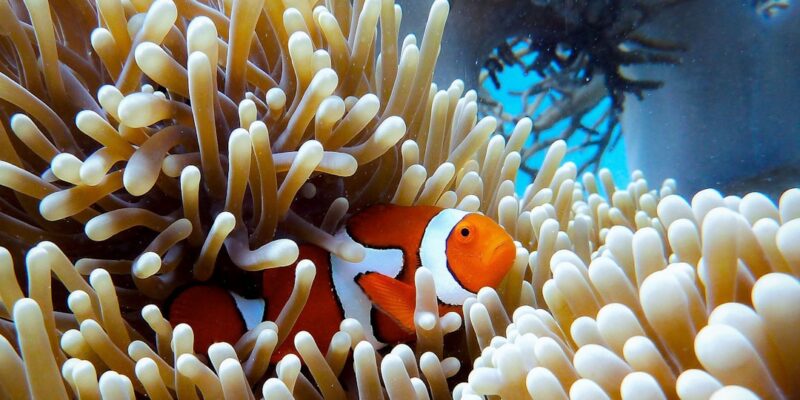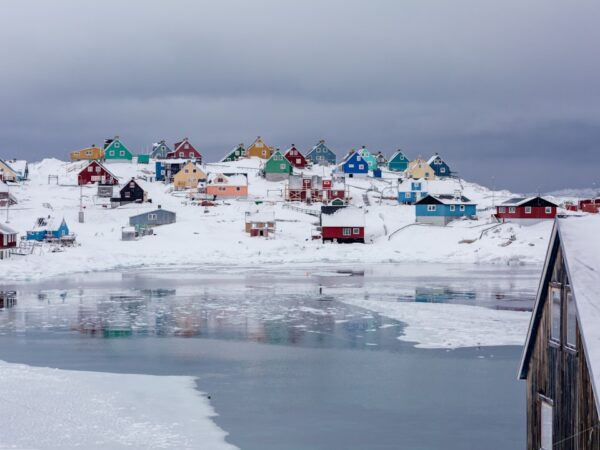
Exploring the Great Barrier Reef: Dive into the Depths!
The Great Barrier Reef is one of the most iconic natural wonders of the world. Located off the coast of Queensland, Australia, it stretches over 2,300 kilometers and covers an area of approximately 344,400 square kilometers. The reef is made up of thousands of individual coral reefs and is home to a diverse range of marine life.
The Great Barrier Reef has a rich history that dates back millions of years. It was formed through a combination of geological processes and the growth of coral polyps. The reef has been inhabited by Indigenous Australians for thousands of years and was first explored by Europeans in the 18th century.
The Great Barrier Reef is not only important for its natural beauty, but also for its ecological significance. It is home to a wide variety of marine species, including over 1,500 species of fish, 600 species of coral, and countless other organisms. The reef provides habitat for these species and plays a crucial role in maintaining the health and balance of the marine ecosystem.
In addition to its ecological importance, the Great Barrier Reef is also a major tourist attraction. It draws millions of visitors each year who come to explore its vibrant coral reefs, swim with marine life, and experience the unique beauty of this underwater paradise. The tourism industry surrounding the reef provides jobs and economic opportunities for local communities.
Key Takeaways
- The Great Barrier Reef is a natural wonder of the world, known for its beauty and biodiversity.
- The marine life in the Great Barrier Reef is diverse and abundant, making it an underwater paradise for divers and snorkelers.
- Scuba diving in the Great Barrier Reef is a thrilling experience, offering the chance to see unique species up close.
- Snorkeling in the Great Barrier Reef is a beginner-friendly activity that allows for a glimpse into the colorful world of coral reefs.
- Exploring the coral reefs of the Great Barrier Reef reveals a vibrant and fascinating ecosystem.
The Diversity of Marine Life in the Great Barrier Reef: An Underwater Paradise
The Great Barrier Reef is home to an incredible diversity of marine life. It is estimated that there are over 1,500 species of fish, 600 species of coral, and thousands of other organisms living in the reef. This makes it one of the most biodiverse ecosystems on the planet.
The reef is teeming with colorful fish, including clownfish, angelfish, and parrotfish. It is also home to larger marine animals such as dolphins, turtles, and sharks. The reef provides a habitat for these species, offering shelter, food, and breeding grounds.
The Great Barrier Reef is also known for its stunning coral formations. Coral reefs are made up of tiny coral polyps that secrete calcium carbonate to form a hard skeleton. Over time, these skeletons build up to create the intricate structures that we see today. The reef is home to a wide variety of coral species, including brain coral, staghorn coral, and plate coral.
The diversity of marine life in the Great Barrier Reef is not only important for its ecological value, but also for its contribution to the tourism industry. Visitors from around the world come to the reef to witness the incredible array of marine species and experience the beauty of this underwater paradise.
Scuba Diving in the Great Barrier Reef: A Thrilling Experience
Scuba diving in the Great Barrier Reef is a thrilling experience that allows you to explore the underwater world and get up close and personal with marine life. The reef offers a variety of dive sites, each with its own unique features and marine species.
One of the benefits of scuba diving in the Great Barrier Reef is the opportunity to see a wide variety of marine life. From colorful fish to majestic turtles, there is always something new and exciting to discover. Diving allows you to get closer to these animals than you would be able to from the surface, providing a truly immersive experience.
Another benefit of scuba diving in the Great Barrier Reef is the chance to explore its stunning coral formations. The reef is home to some of the most beautiful and diverse coral reefs in the world. Diving allows you to swim among these vibrant structures and witness their intricate beauty up close.
When scuba diving in the Great Barrier Reef, it is important to follow some tips to ensure a safe and enjoyable experience. First, make sure you are properly trained and certified before diving. This will ensure that you have the necessary skills and knowledge to dive safely. Second, always dive with a buddy and follow the instructions of your dive guide. They will be able to provide guidance and ensure that you have a safe and enjoyable dive. Finally, be mindful of the marine life and the reef itself. Avoid touching or disturbing the coral, as this can cause damage to the delicate ecosystem.
Snorkeling in the Great Barrier Reef: A Beginner’s Guide
| Difficulty Level | Equipment Needed | Best Time to Go | Water Temperature | Visibility |
|---|---|---|---|---|
| Beginner | Mask, Snorkel, Fins, Wetsuit | June – October | 22-29°C | 10-30 meters |
Snorkeling is a popular activity in the Great Barrier Reef, especially for those who are new to diving or prefer to stay closer to the surface. Snorkeling allows you to explore the reef from above, giving you a glimpse into the underwater world without the need for specialized equipment.
One of the benefits of snorkeling in the Great Barrier Reef is its accessibility. Unlike scuba diving, which requires training and certification, snorkeling can be enjoyed by people of all ages and skill levels. All you need is a mask, snorkel, and fins, and you’re ready to go.
Snorkeling in the Great Barrier Reef also offers the opportunity to see a wide variety of marine life. From colorful fish to graceful turtles, there is always something new and exciting to discover. Snorkeling allows you to get closer to these animals than you would be able to from the surface, providing a unique perspective on their behavior and habitat.
When snorkeling in the Great Barrier Reef, it is important to follow some tips to ensure a safe and enjoyable experience. First, make sure you are comfortable in the water and know how to swim. This will ensure that you can navigate the reef safely. Second, always snorkel with a buddy and stay within sight of each other. This will provide an extra level of safety and allow you to share your experiences with someone else. Finally, be mindful of the marine life and the reef itself. Avoid touching or disturbing the coral, as this can cause damage to the delicate ecosystem.
Exploring the Coral Reefs of the Great Barrier Reef: A Colorful World
The Great Barrier Reef is home to a variety of coral reefs, each with its own unique characteristics and marine life. Coral reefs are formed by the accumulation of coral skeletons over time, creating intricate structures that provide habitat for a wide range of species.
The Great Barrier Reef is known for its fringing reefs, which are found close to the shore and are often visible from the surface. These reefs are formed along the coastline and provide protection for coastal areas from erosion and storms. Fringing reefs are home to a variety of marine life, including fish, turtles, and corals.
Another type of coral reef found in the Great Barrier Reef is the barrier reef. Barrier reefs are located further offshore and are separated from the mainland by a lagoon. These reefs provide a barrier between the open ocean and the coast, protecting coastal areas from strong waves and currents. Barrier reefs are home to a diverse range of marine life, including sharks, dolphins, and rays.
The Great Barrier Reef also features atolls, which are circular or horseshoe-shaped reefs that surround a central lagoon. Atolls are formed when a volcanic island sinks below sea level, leaving behind a ring of coral reefs. These reefs provide habitat for a variety of marine species, including fish, turtles, and sharks.
Coral reefs are not only important for their beauty, but also for their ecological value. They provide habitat for a wide range of marine species and play a crucial role in maintaining the health and balance of the marine ecosystem. Coral reefs also act as natural barriers, protecting coastal areas from erosion and storms.
The Best Time to Visit the Great Barrier Reef: Planning Your Trip
When planning a trip to the Great Barrier Reef, it is important to consider the best time to visit. The reef is a year-round destination, but the weather and water conditions can vary depending on the season.
The Great Barrier Reef experiences two main seasons: the wet season and the dry season. The wet season, which runs from November to April, is characterized by high temperatures, humidity, and rainfall. This is also the cyclone season, with a higher chance of tropical storms and cyclones. While the wet season can be unpredictable, it also offers some unique opportunities, such as the chance to see marine life during their breeding season.
The dry season, which runs from May to October, is characterized by cooler temperatures, lower humidity, and less rainfall. This is considered the peak tourist season, as the weather is generally more pleasant and the water conditions are ideal for diving and snorkeling. The dry season also offers the best visibility for underwater activities, allowing you to see more of the marine life and coral formations.
When planning your trip to the Great Barrier Reef, it is important to consider your preferences and priorities. If you prefer warmer weather and don’t mind the occasional rain shower, the wet season may be a good option for you. If you prefer cooler temperatures and want to maximize your chances of good weather and water conditions, the dry season may be a better choice.
It is also important to consider other factors when planning your trip, such as school holidays and public holidays. These periods tend to be busier and more expensive, so it may be worth considering visiting during off-peak times if possible.
Protecting the Great Barrier Reef: Environmental Conservation Efforts
The Great Barrier Reef faces a number of threats, including climate change, pollution, and overfishing. To protect this natural wonder for future generations, there are a number of environmental conservation efforts in place.
One of the key conservation efforts is the Great Barrier Reef Marine Park Authority (GBRMPA), which is responsible for managing and protecting the reef. The GBRMPA works to ensure the long-term sustainability of the reef by implementing regulations and guidelines for activities such as fishing, tourism, and shipping.
The Australian government has also implemented a number of initiatives to protect the Great Barrier Reef. These include the Reef 2050 Plan, which sets out a long-term strategy for the protection and management of the reef, and the Reef Trust, which provides funding for projects that aim to improve the health and resilience of the reef.
In addition to these government-led initiatives, there are also a number of non-profit organizations and research institutions working to protect the Great Barrier Reef. These organizations conduct research, raise awareness, and implement conservation projects to address the threats facing the reef.
Protecting the Great Barrier Reef is not only important for its ecological value, but also for its economic value. The reef supports a multi-billion dollar tourism industry and provides jobs and economic opportunities for local communities. By protecting the reef, we can ensure that future generations can continue to enjoy its beauty and benefits.
The History of the Great Barrier Reef: From Past to Present
The Great Barrier Reef has a rich history that dates back millions of years. It was formed through a combination of geological processes and the growth of coral polyps. The reef has been inhabited by Indigenous Australians for thousands of years and was first explored by Europeans in the 18th century.
The Indigenous people of Australia have a deep connection to the Great Barrier Reef. For thousands of years, they have relied on its resources for food, shelter, and cultural practices. The reef holds significant cultural and spiritual value for these communities, who have passed down their knowledge and traditions through generations.
European exploration of the Great Barrier Reef began in the 18th century with the arrival of Captain James Cook. Cook’s expedition mapped parts of the reef and documented its unique features. Since then, the reef has been a subject of scientific study and exploration, with researchers from around the world visiting to learn more about its ecology and biodiversity.
In recent years, the Great Barrier Reef has faced a number of challenges, including climate change, pollution, and overfishing. These threats have led to the degradation of the reef and the loss of some of its biodiversity. Efforts are now underway to protect and restore the reef, ensuring that it can continue to thrive for future generations.
Understanding the history of the Great Barrier Reef is important for appreciating its significance and the challenges it faces. By learning from the past, we can work towards a more sustainable future for this natural wonder.
Beyond Diving: Other Activities to Enjoy in the Great Barrier Reef
While diving and snorkeling are popular activities in the Great Barrier Reef, there are also a variety of other activities to enjoy. From sailing and kayaking to helicopter tours and island hopping, there is something for everyone to enjoy in this tropical paradise.
One popular activity in the Great Barrier Reef is sailing. There are a number of sailing tours available that allow you to explore the reef and its surrounding islands at your own pace. Whether you choose to charter your own yacht or join a guided tour, sailing offers a unique perspective on the reef and allows you to visit secluded spots that are not accessible by land.
Kayaking is another popular activity in the Great Barrier Reef. There are a number of guided kayak tours available that allow you to explore the reef’s crystal-clear waters and get up close and personal with marine life. Kayaking offers a peaceful and eco-friendly way to experience the reef, allowing you to paddle through coral gardens and explore hidden coves.
For those looking for a more adventurous experience, helicopter tours offer a bird’s-eye view of the Great Barrier Reef. These tours allow you to see the reef from above and take in its vastness and beauty. Helicopter tours also provide the opportunity to visit remote areas of the reef that are not accessible by boat or land.
Island hopping is another popular activity in the Great Barrier Reef. There are a number of islands located within the reef that offer a range of activities, from relaxing on pristine beaches to exploring rainforests and hiking trails. Each island has its own unique features and attractions, making it worth visiting more than one during your trip.
Exploring the Great Barrier Reef beyond diving allows you to experience the diversity and beauty of this natural wonder from different perspectives. Whether you choose to sail, kayak, take a helicopter tour, or go island hopping, there is no shortage of activities to enjoy in this tropical paradise.
The Future of the Great Barrier Reef: Challenges and Opportunities
The Great Barrier Reef faces a number of challenges that threaten its long-term survival. Climate change is one of the biggest threats, with rising sea temperatures leading to coral bleaching and the loss of biodiversity. Pollution from land-based activities, such as agriculture and urban development, also poses a significant risk to the reef. Overfishing is another major concern, as it can disrupt the delicate balance of the marine ecosystem.
Despite these challenges, there are also opportunities to protect and restore the Great Barrier Reef. Efforts are underway to reduce greenhouse gas emissions and mitigate the impacts of climate change. The Australian government has committed to investing in renewable energy and implementing measures to improve water quality and reduce pollution. There are also initiatives in place to promote sustainable fishing practices and protect vulnerable species.
In addition , it is important to consider the potential consequences of any actions taken. This includes evaluating the possible risks and benefits, as well as considering the long-term effects. It is crucial to weigh the potential outcomes and make informed decisions based on careful analysis. Furthermore, considering the ethical implications of our actions is essential. We must ensure that our choices align with our values and do not harm others or the environment. Taking these factors into account can help us make responsible and well-informed decisions.
FAQs
What is the Great Barrier Reef?
The Great Barrier Reef is the world’s largest coral reef system, located in the Coral Sea, off the coast of Australia.
What are diving excursions in the Great Barrier Reef?
Diving excursions in the Great Barrier Reef are guided tours that allow visitors to explore the underwater world of the reef. These tours can be either snorkeling or scuba diving.
What kind of marine life can be seen during diving excursions in the Great Barrier Reef?
The Great Barrier Reef is home to a diverse range of marine life, including over 1,500 species of fish, 600 types of coral, and numerous other creatures such as turtles, sharks, and dolphins.
What is the best time of year to go on a diving excursion in the Great Barrier Reef?
The best time to go on a diving excursion in the Great Barrier Reef is between June and October, when the weather is dry and visibility is at its best.
What are the safety precautions that should be taken during diving excursions in the Great Barrier Reef?
Visitors should always follow the instructions of their guides and be aware of the potential dangers of diving, such as decompression sickness and marine life encounters. It is also important to use proper equipment and to never touch or disturb the coral or marine life.
What are the different types of diving excursions available in the Great Barrier Reef?
There are various types of diving excursions available in the Great Barrier Reef, including day trips, liveaboard trips, and specialized tours such as night diving and wreck diving.


















